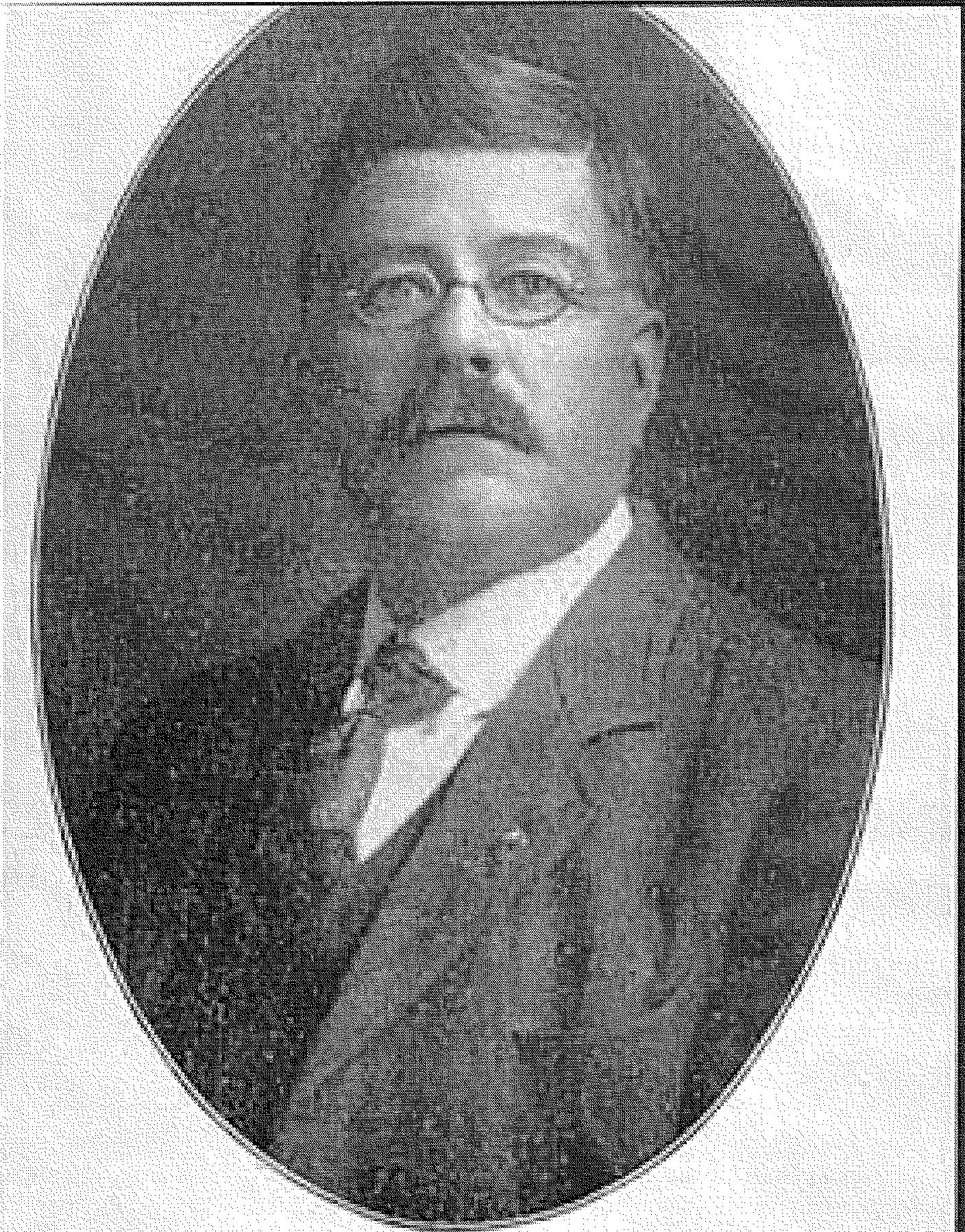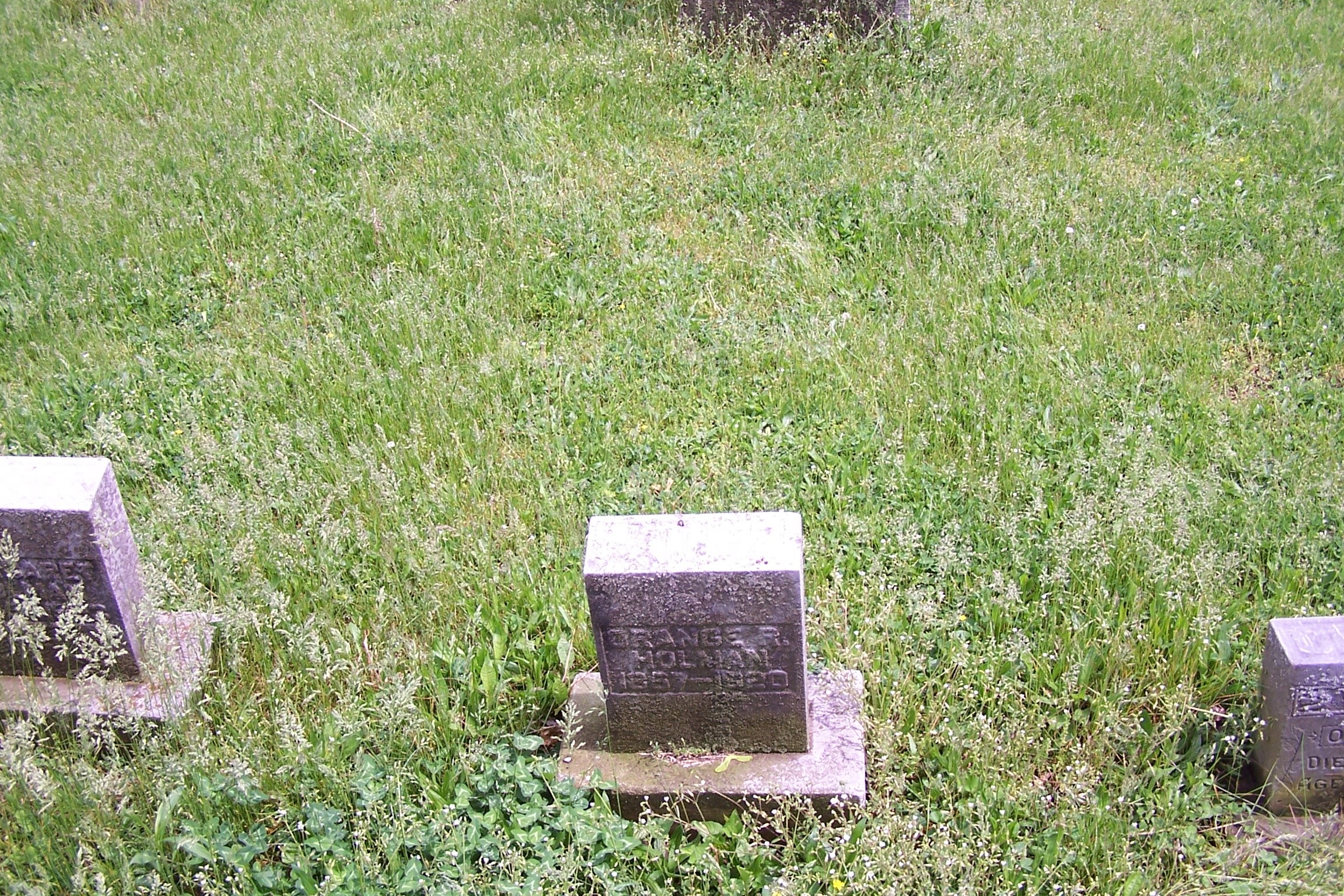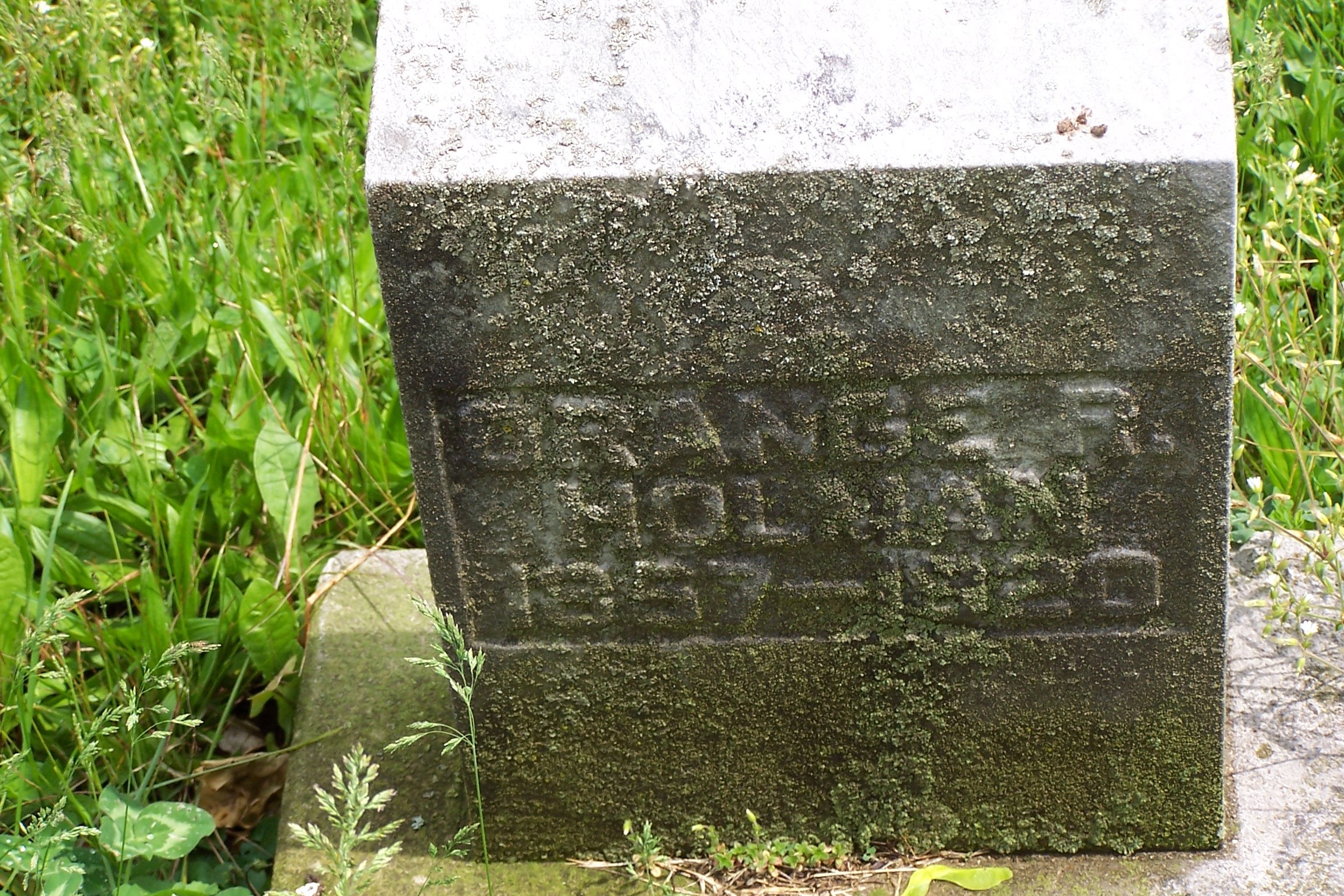 Sheriff Orange Holman
Sheriff Orange Holman
Sheriff Holman was born on May 22, 1857, and died on April 11, 1920
Sheriff Holman served from 1885 to 1886
Sheriff Orange Holman was the first known Sheriff to be “shot” during his time in office. Sheriff Holman is also known as one of if not the youngest Sheriff ever to serve in office being elected at 26 years of age. Sheriff Holman goes largely unrecognized as a hero of Grant County for thwarting a lynching which was about to take place. It is a magnificent story
Sheriff Orange Holman
Thwarted Lynching
From the book A lynching in the heartland: race and memory in America
by James H. Madison
On Saturday evening, July 11, 1885, at about 10:00 pm., Millie Linston, aged, 20 Retta Leach, 15, and Ella Leach, 13, decided to walk downtown. The three girls later told their story many times to newspaper reporters, justice officers, and ordinary Marion citizens. On their way home, long after dark, they passed Frank Wallace leaning against a lamppost. "Good evening, girls," Wallace said. "Who's that?" Retta Leach asked. "It is nobody but a nigger," Mollie Linston replied. Wallace heard her remark and sprang toward the girls with his arms outstretched. In great fright they ran the five blocks home, Wallace following behind, they said. He never touched them, but as they arrived at the gate to the Leach home, Wallace threw a stone. Although in their stories the girls never said the stone hit any one of them, Mollie Linston nonetheless collapsed at the gate, apparently unconscious. A doctor rushed to her bedside, and not until Sunday afternoon did she leave her sickbed. During the night, some said, Wallace was prowling around the neighborhood. At 9:00 a.m. Sunday morning, police found him and put him in jail.
In an interview with the Marion Chronicle reporter, Frank Wallace gave detailed account of his whereabouts that Saturday evening. He said he was with "some of the boys." The local reporter transcribed Wallace's words thusly, adding his own identifying labels in parentheses:
I came to town by the Grand View hotel and found the boys over near McClure's corner, where I found John Robinson, Charley Hardman(colored), and Andy Slagle and Charley Patterson(white). Afterwards we found Marion Willis(white). We all went out to McClure's sheep pen and stayed all night. We had a half pint of whisky.
Perhaps Wallace spent the night with his five friends-three white and three black men, drinking together on a Saturday evening. Rumors about Wallace were soon flying through Marion. Some said that the 65-year old black man had several times approached women on the street at night and frightened them. The Chronicle's industrious reporter "followed up several of these rumors, but non of them proved reliable." People also claimed that Wallace had abducted "a little white girl" a year earlier and kept her locked in his room on Third Street. The reporter found that Wallace indeed had a girl in his room for some time but she was "a hard case"- aged about 16 and willingly living with Wallace. No charges were ever brought in this "abduction" case. Wallace, the Chronicle reporter concluded, "has never been known as a loafer, but is a quiet, hard-working man."
Two rumors the reporter verified: 10 years earlier Wallace had been convicted of raping a black girl, aged 14, and had served 3 years in the state penitentiary for his crime; and Wallace had been married to a white woman who had divorced him while he was serving his time. He seemed 20 years older after returning from the penitentiary, the reporter noted, no longer the "fine looking darky with splendid physique" he had been when he had moved to Grant County during the Civil War.
On Sunday afternoon, as Mollie Linston was getting out of bed, several hundred men and boys gathered near the jail, convinced that they had to protect young white women from this old black man. Calls to lynch Wallace rang out through the hot summer air, yet the crowd of many hands and no brains remained disorganized and uncertain. Two events, at least, contributed to their confusion. The Chronicle reporter asserted that had Mollie Linston "died on Sunday Wallace would have been lynched that night. Or had it been a night during the week when the saloons were open a crowd would soon have worked themselves into a proper condition of mind to have attacked the jail."
Even after Mollie Linston recovered from whatever ailed her the need for justice remained. On Monday, July 13, whispered conversations occurred in knots of men gathered around the Courthouse Square. Some formed a "vigilance committee," and at 11:30 p.m. 21 masked men came marching toward the jail. Two in the front carried sledgehammers, a third a rope. With growing numbers of onlookers behind them, the masked men knocked on the jail door and demanded that Sheriff Orange Holman open up. He refused and the men with the sledges broke it down with two swings. Sheriff Holman and City Marshal L. A. Von Behren were inside. They were not armed, but each grabbed a chair and raised it to hold off the masked attackers. As the Sheriff and marshal struggled, shots rang out from inside the jail and from outside. Most of the revolvers fired into the ceiling and the air, but one bullet pierced Sheriff Holman's coat. More tragically, a couple of minutes after the gunfire began James Kiley, aged 21, fell to the jail floor, a bullet in his right temple. All noise and struggle ceased. The masked men quickly left the jail. Kiley was carried to a nearby restaurant, where he died at 1:00 a.m. People milled about the streets for the rest of the night but no attack on the jail resumed.
The next day, Tuesday, the county coroner held an inquest. The sheriff and marshal testified, as did the doctor who attended to Kiley. The coroner concluded that Kiley died from a gunshot wound made by an unknown person. Funeral services were held the following day at St. Paul's Catholic Church, a wooden frame building on Branson Street. In his sermon Father John Grogan dwelt on the wickedness of mob law and placed responsibility for Kiley's death on the heads of the mob that stormed the jail. Some shared Father Grogan's views. In a sidewalk gathering, J. P. NIcol, a workman at Keller & Mead chair factory, loudly condemned mob violence. Jim Havens disagreed and said that Wallace should be lynched. Nicol replied, "Then you are no better than the nigger," which prompted Havens to knock Nicol to the ground and kick him. Bystanders cheered.
Tuesday afternoon brought a "holiday appearance" to Marion as people from all over Grant County flocked to the downtown. Newspaper reporters from other towns arrived, "all expecting a high old time about midnight." As the sun set several thousand people waited, attracted by rumors that the "vigilance committee" would appear at half past eleven. In a grove near Third street a crowd of men and boys attempted to organize themselves. Someone produced a rope and plaited a hangman's noose, which stirred greater excitement. Only about a dozen volunteered to act, however. One of them addressed the crowd as an Indianapolis reporter recorded his words: "Men," he said, "we are about to fight for the protection of our wives and daughters." They formed a line and marched off, determined, they said, "to take the nigger and hang him" from the portico of the county courthouse. A large number of spectators followed at a distance as the brave dozen marched from the grove. Sheriff Holman greeted the vigilance committee at the jail door and told them he was determined to protect his prisoner. It was his duty, he said. Two other men also spoke in support of the sheriff. Even before they had finished speaking the mob began to disperse into the crowd. The crowd melted. Frank Wallace would live.
A week and a half later, the Marion Chronicle reporter wrote about the problem of women on the streets of Marion at night. Some were prostitutes, he had to admit, women "whose vocation makes it necessary for them to have the freedom of the town." And while a man seeking their services is "usually very careful of his approaches, he will undoubtedly make mistakes....Many good and pure women have been accosted on the streets by libertines." This risk was especially large for young women "wandering aimlessly about without escorts, having no apparent object beyond seeing and being seen." Such girls "are usually two or three together and in many instances impudent and noisy."
In this context, the Chronicle writer turned to the "three girls who testify that Wallace assaulted them." They were on "a frivolous errand," he wrote. "One of them at least had been on the street before and attracted attention by her conduct." Indeed, "if they had not been approached by any one else than Wallace they missed their object, and had they been allowed to go home without being stopped by some one they perhaps would have been disappointed." The reporter did not charge the three with prostitution; and he admitted the principle that "a woman has as much right on the streets at night as a man." But he clearly believed that Marion's streets were "not the place for young girls to be found at night alone."
Thus, readers of the Marion Chronicle might well have concluded that Frank Wallace was no more guilty than the many other men and boys who often called out to young women walking the streets on a Saturday night. Readers might even have doubted that this old black man assaulted, pursued, or threw a stone at three innocent girls. He was "guilty," however, of once having been married to a white woman. Wallace told the Indianapolis reporter that this marriage was a "curse," the real source of prejudice against him in Marion, and that he was leaving town, never to return.
The thwarting of the mob in 1885 became part of Grant County's recorded past. The very next year the first published local history appeared. The massive and handsomely prepared volume mostly celebrated the pioneers of the county, but the writers included a few paragraphs about the attempt at mob law a year earlier. The local historian offered two conclusions about the evens of July 1885: "it is only when the voice of passion is hushed that justice can be meted out"; and "much credit is due to the Sheriff, Orange Holman, and L. A. Von Behren for the fearless manner in which they performed their duty." They noted in passing that Frank Wallace was later tried and acquitted by a local court. There was no mention of Kiley and the other vigilantes who thought they were protecting white women and the boundaries of their community.
In some ways Grant County was out of step and not so ordinary. In 1885, when other communities tolerated lynchings, Grant County did not. At a later time, in 1930, when lynchings seemed to be a part of a past long dead, or present only in the wicked South, Grant County became the scene of a lynching.
The history of Grant County, Indiana, in the next 45 years contains no hard evidence that explains why Sheriff Holman resisted a mob in 1885 and Sheriff Campbell did not in 1930; why Frank Wallace lived and Tom Shipp and Abe Smith died; why justice reigned in one instance and passion in another. The two evens are suffciently different to make comparisions tenuous. Certainly Sheriff Holman acted with more determination to do his duty than did Campbell, who was perhaps lulled into complacency by the absence of lynchings in the community's past. The mob of 1885 was less organized and clear in its purpose, especially after one of their own died in the accidental shooting. In the community at large in 1885, one reporter concluded, there was "no popular sentiment justifying the attempted lynching." And certainly Frank Wallace's "crimes" were lesser by far than the charges of rape and murder that so stirred the mob and the community in 1930.
In the end, why a lyncing happened or did not happen may be beyond explanation or may even be nothing but chance circumstances. Still, the history of Grant County, this ordinary place in America's heartland, suggests patterns of everyday life that may help illuminate not only the 1930 lynchings but also it's aftermath.
Biography
Orange R. Holman was born in Grant County, Indiana on the 21st of May 1857, and is the only son of William H. and Matilda V. (Stevens) Holman, natives of Ohio and Indiana respectively. He was reared to agricultural pursuits, obtained a fair English education in the common schools, but later in life received a valuable practical education by coming in contact with businessmen in his many business transactions. He began life for himself as a farmer, but afterward engaged with a stock firm of Baltimore, for which he purchased livestock for some time, buying for himself at intervals during the period of his service with the company. He served as Constable of Franklin Township two terms, and in 1884, when but twenty-seven years of age, was elected Sheriff of Grant County, defeating his competitor, a very worthy gentleman, by 418 votes, a majority which speaks well for his popularity in the county. Mr. Holman is a popular official, a courteous gentleman, and numbers his friends by the scores. He is a member of the Knights of Pythias and an ardent supporter of the Republican Party.
ORANGE HOLMAN DIES
AFTER BRIEF ILLNESS
___________
Was Former Sheriff of Grant County and Ex-Councilman of Second Ward
___________
Orange Holman, 62, former sheriff of Grant county and a member of the city council for two terms, died early Sunday morning at his home, 411 West First Street.
Death followed an illness of several weeks with complication. It had been known for several days that his condition was serious, but the announcement of his death was received with profound surprise. He was well known throughout the county , having taken an active part in politics and for many years was in the livery and trucking business.
He is survived by his wife, Margaret Holman; his mother. Mrs. M. A. Holman; three sons, Russell of Niagra Falls, N. Y., Cordie, of Beveryly, Wash., and Jesse, of Indianapolis; three sisters, Mrs. Louie Diggs of Marion, Mrs. George Williamson of Sweetser, and Mrs. Gertrude Holman of New York City.
The remains will lie in state at the residence until noon today. Funeral services will be held at 2:30 o’clock with Rev. John C. White, pastor of the First M. E. church in charge. Interment will be in the I. O. O. F. cemetery.
The Marion lodge of Elks of which Mr. Holman was a member will attend the services in a body. Mr. Holman was also a member of the Knights of Pythias lodge.
Mr. Holman was a lifelong resident of Grant county being born May 22, 1857. He lived in Marion practically all of his life. When he was twenty six years of age he was elected sheriff, holding the distinction of being one of the youngest men to be lected to such a responsible office in the state.
He later re-entered politics and was elected councilman of the second ward. He served from 1910 to 1914 but resigned several weeks later to become bailiff of the city court under Mayor J. O. Batchelor.
During the past few years he has been engaged in the baggage transfer business with offices in the Spencer hotel.



